News
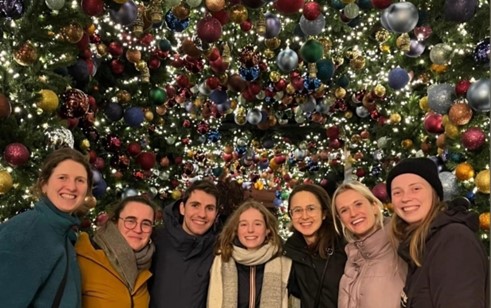
Microbiome data analysis workshop
Fran and Ines T. participated in the 2025 Microbiome Data Analysis Workshop at UHasselt. This hands-on workshop provided an important theoretical framework, along with practical tips and tricks for analyzing complex microbiome data.
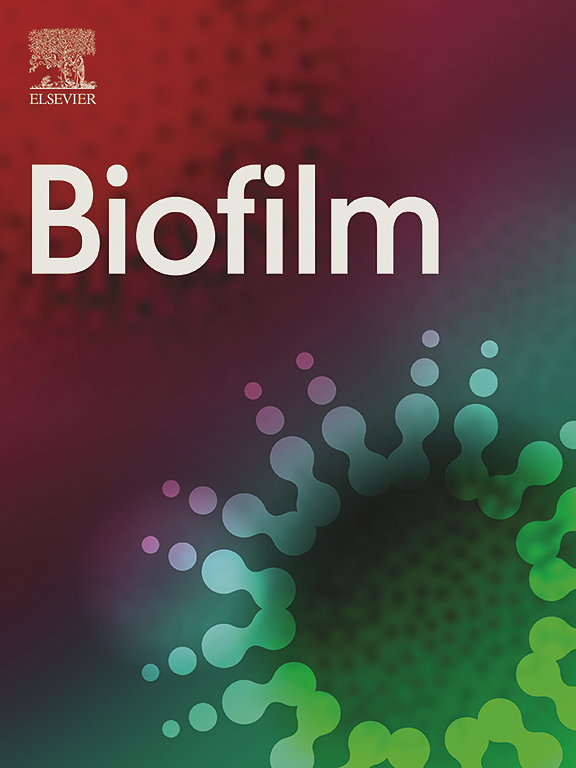
Salmonella biofilm formation diminishes bacterial proliferation in the C. elegans intestine
We are thrilled to share that our latest work on Salmonella biofilm formation in the gut got published in Biofilm last December. In this study, we show how Salmonella biofilms hinder colonization of the C. elegans intestine—without affecting the worms' survival. The full article is available open access online.

STOP Antimicrobial Coating Conference
Dina, Himanshu and Ines T. attended the Antimicrobial Coating conference in Mons. This conference brought together all the partners from the STOP project, who together focus on developing new generations of antimicrobial agents that can be deployed on surfaces.
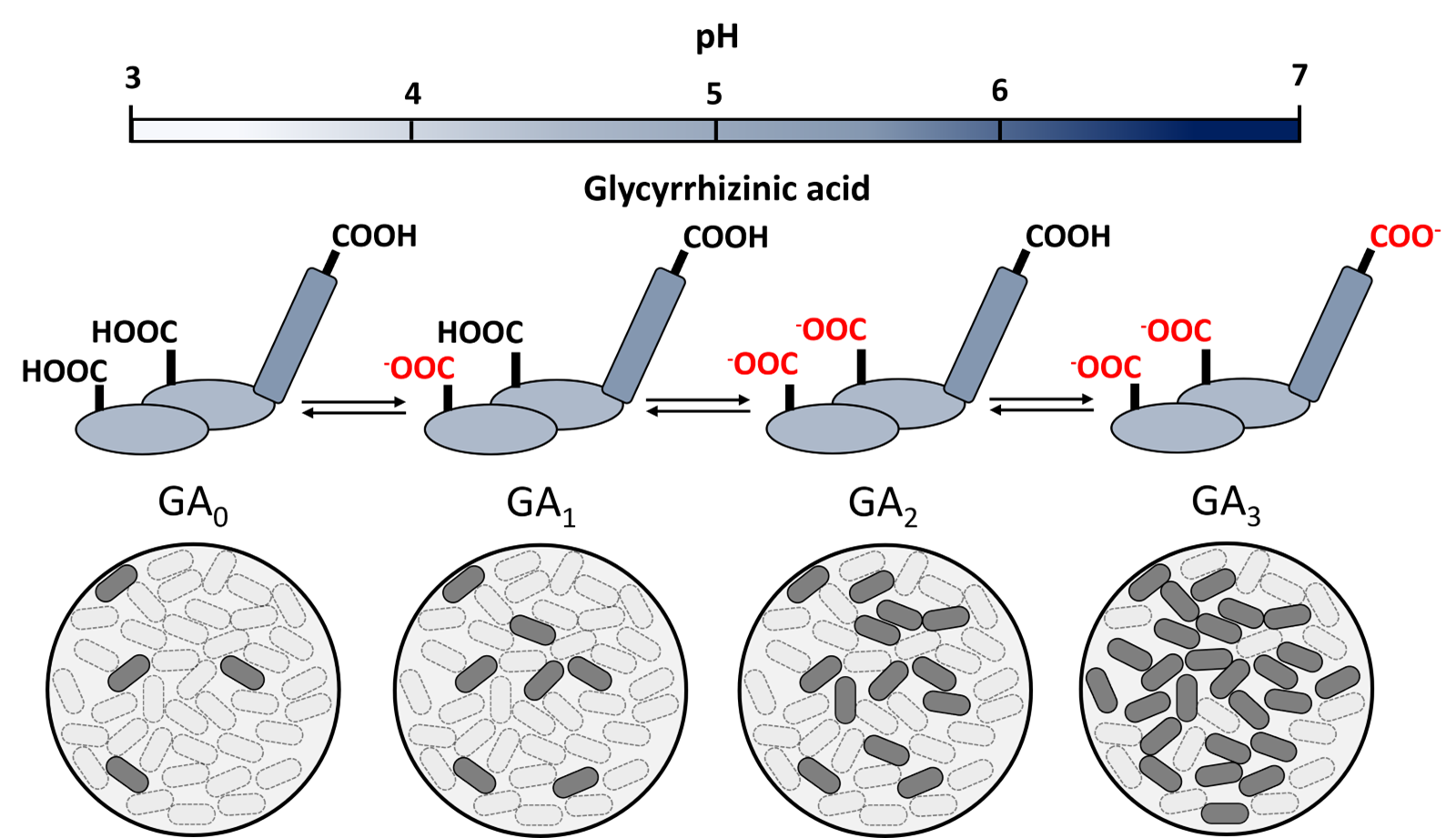
Antimicrobial Activity of Glycyrrhizinic Acid is pH-Dependent
In recent years, antimicrobial hydrogels have attracted much attention in biomedical applications due to their biocompatibility and high water content. Glycyrrhizin (GA) is an antimicrobial that can form pH-dependent hydrogels due to the three carboxyl groups of GA that differ in pKa value. The influence of GA protonation on the antimicrobial activity, however, has never been studied before. Therefore, we investigated the effect of the pH on the antimicrobial activity of GA against various bacteria, including ESKAPE pathogens. This activity cannot solely be attributed to the resulting pH decrease of the suspension, as the presence of GA significantly increases the activity. Instead, this increased activity is due to the release of GA from the hydrogel into the suspension, where it directly interacts with the bacteria. Moreover, we provide evidence indicating that the pH dependency of the antimicrobial activity is due to differences in GA protonation state by treating the pathogens with GA solutions differing in their GA protonation distribution. Overall, our results demonstrate that the pH influences not only the physical but also the antimicrobial properties of the GA hydrogels.
.jpg)
Symposium Microbiome: From Benchtop to Bedside
Fran, Sybren, Ines T., Ines C., and Lauren attended the symposium "Microbiome: From Benchtop to Bedside" organized by the University of Antwerp, where they engaged in cutting-edge discussions on the microbiome's role in science and medicine. Three of our master thesis students (Raoul, Lionel and Noëmi) also joined the symposium, where they all presented a poster on their Master thesis research.
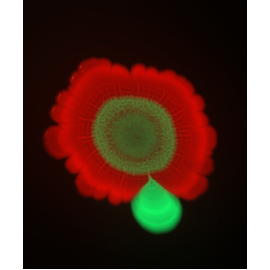
ISME Photo competition
Microscopy images of the new multi-species biofilm model developed by Sybren and his Master thesis student Lionel to study the interactions between Salmonella and the probiotic Escherichia coli Nissle won the photo competition of the International Society of Microbial Ecology and will be featured on the ISME website!
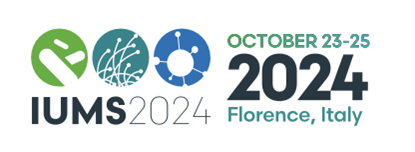
IUMS2024
In October, Sybren traveled to Florence, Italy, to attend the 18th Congress of the International Union of Microbiological Societies (IUMS2024), where he also presented his work on the ecological role of resource competition between Salmonella and the probiotic Escherichia coli Nissle.
All abstracts are published open access online.
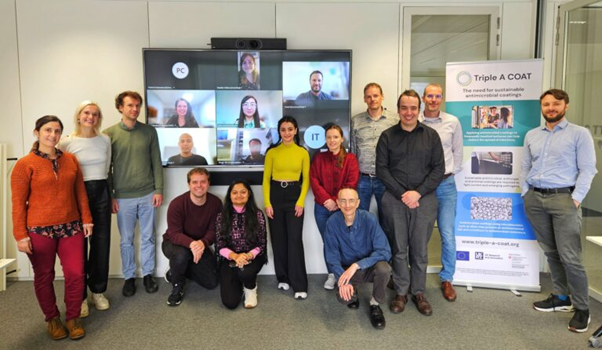
5th Triple-A-Coat Consortium Meeting
In October 2024, the Triple-A-COAT consortium met in Leuven hosted by our partner SIRRIS to share their latest results and discuss the next steps in the project. More information can be found on Triple-A-COAT update October 2024 | Triple A COAT.

Imidazoles and Quaternary Ammonium Compounds as Effective Therapies against (Multidrug-Resistant) Bacterial Wound Infections
We’re pleased to announce the publication of our latest research article in the journal Antibiotics, titled "Imidazoles and Quaternary Ammonium Compounds as Effective Therapies against (Multidrug-Resistant) Bacterial Wound Infections." This study explores the potential of imidazoles and quaternary ammonium compounds as combination treatments for bacterial wound infections, including those caused by multidrug-resistant strains. Our findings suggest that these compounds could serve as effective alternatives in combating challenging wound infections. The full article is available open access.
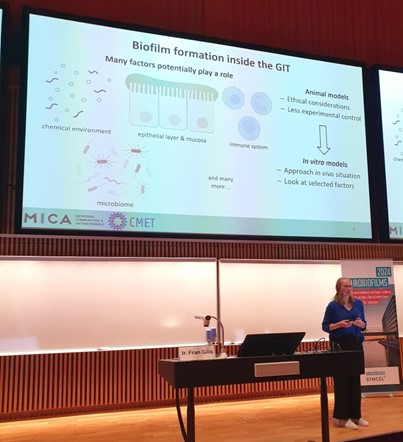
Eurobiofilms 2024
Fran attended the Eurobiofilms 2024 conference in Copenhagen, Denmark. She had the opportunity to present her ongoing research on ‘The role of Salmonella biofilm formation in the porcine gut’
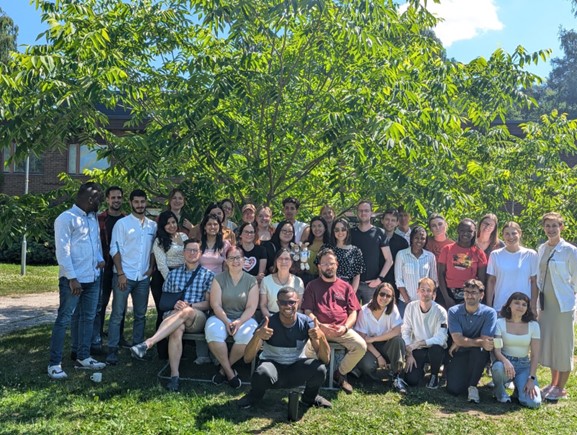
Una Europa One Health Summer School 2024
Sybren was invited to represent the KU Leuven during the 2024 edition of the One Health Summer School organized by the Una Europa alliance. During this intensive week, international experts on human, animal and environmental health joined together amidst the Finnish nature to discuss the current understanding of and future directions for the One Health concept.
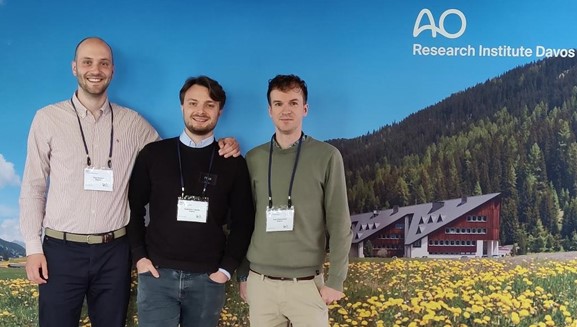
ARI Orthopedics 2024
Guglielmo attended the ARI Orthopedics 2024 conference organized by the AO foundation in Davos, Switzerland. He presented a poster on the development of a novel biofilm triggered antibiotic release coating for implantable devices.
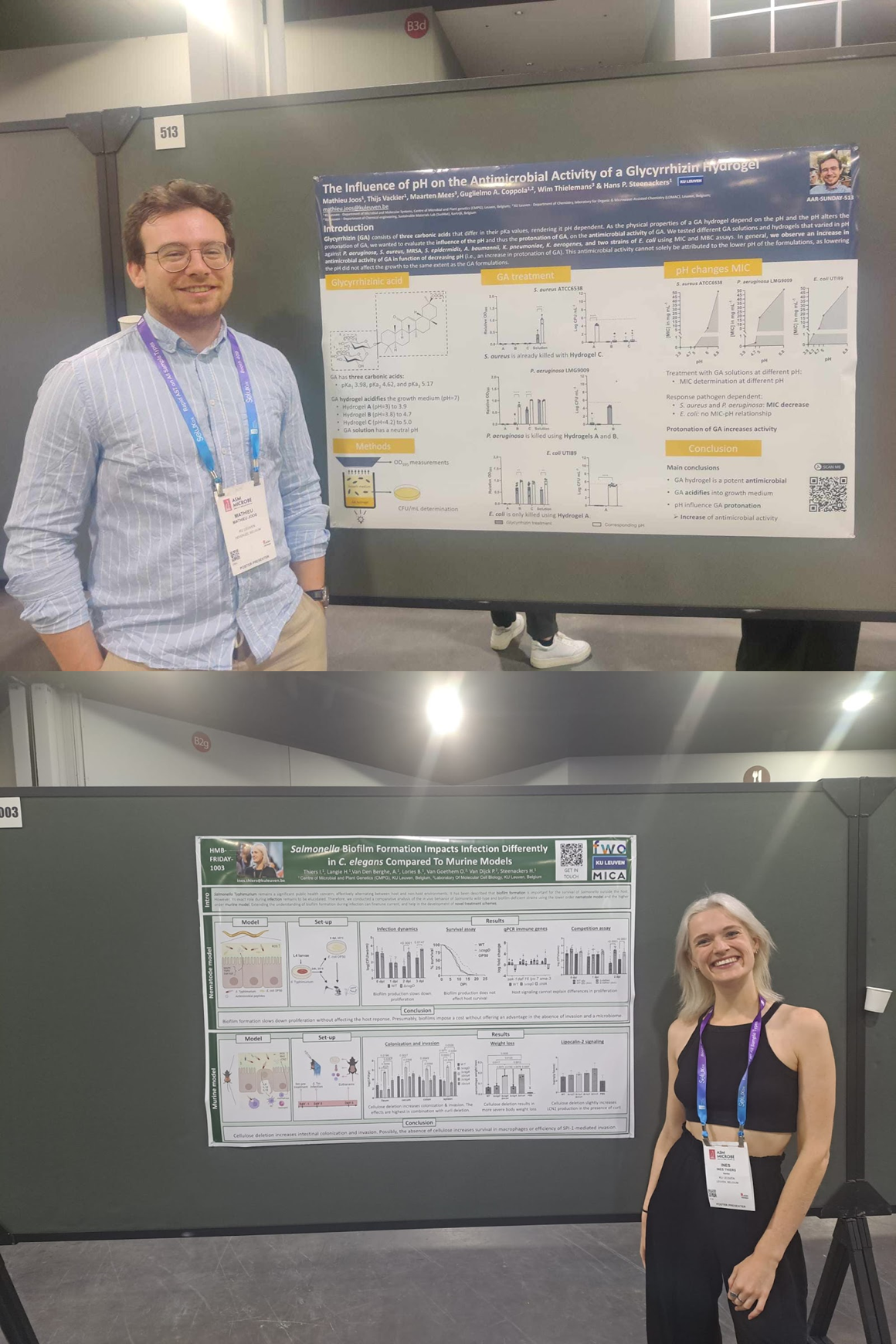
ASM Microbes 2024
Mathieu Joos and Ines Thiers represented MiCA at ASM Microbes 2024 in Atlanta, Georgia. Mathieu Joos presented his work about ‘The influence of the pH on the antimicrobial activity of a Glycyrrhizin Hydrogel’, while Ines Thiers elaborated on Salmonella biofilm formation during infection in C. elegans and murine models.
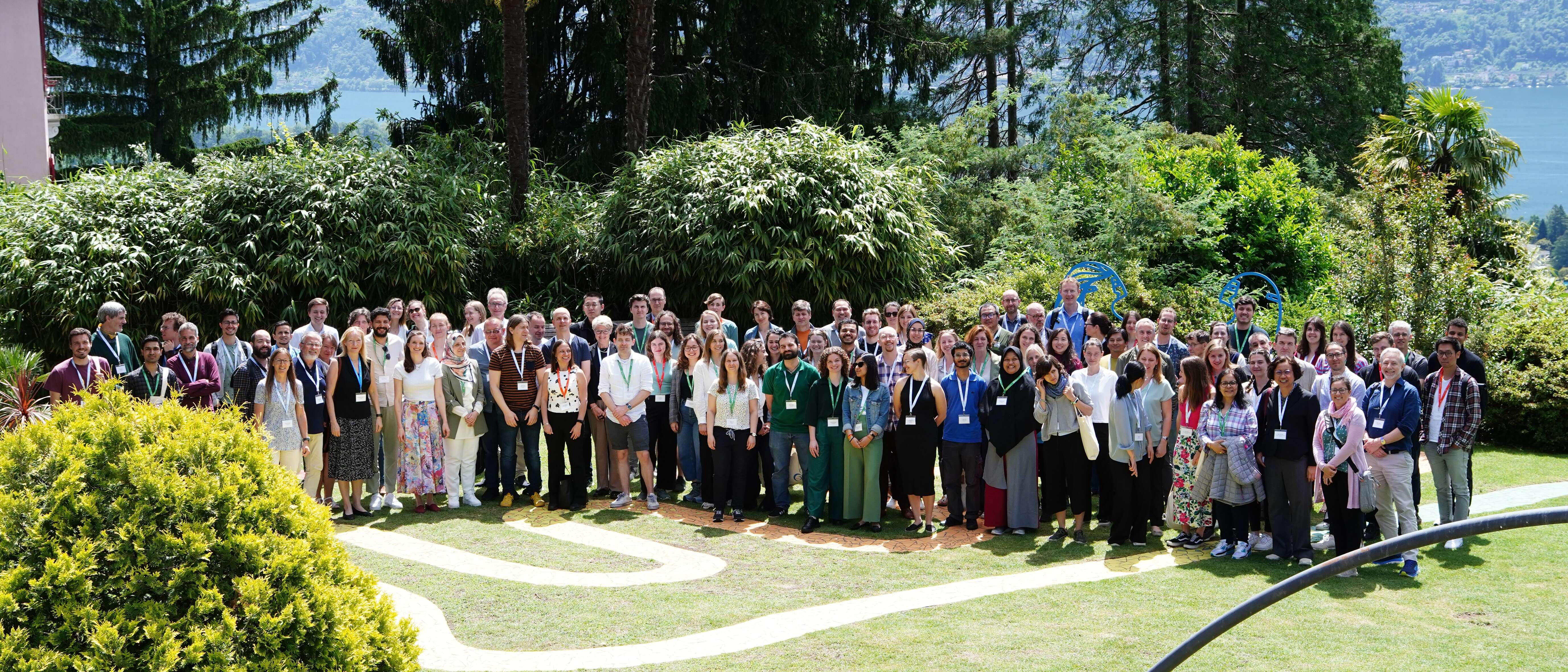
NACARB 2024
Sander & Lauren recently attended the prestigious NACARB 2024 conference (New Approaches to Combat Antibiotic-Resistant Bacteria) in Ascona, Switzerland. This conference brought together leading researchers, scientists, and healthcare professionals to discuss and develop innovative strategies to address the growing threat of antibiotic resistance. At NACARB, they had the honor of presenting their latest research findings through a poster presentation.

EMBL Course: Advanced fluorescence imaging techniques
Thibault was invited to join a week-long course at the EMBL headquarters in Heidelberg covering a multitude of fluorescence microscopy techniques. Topics of the lectures and practicals ranged from single-molecule localization, FRET and superresolution to expansion and adaptive feedback microscopy.
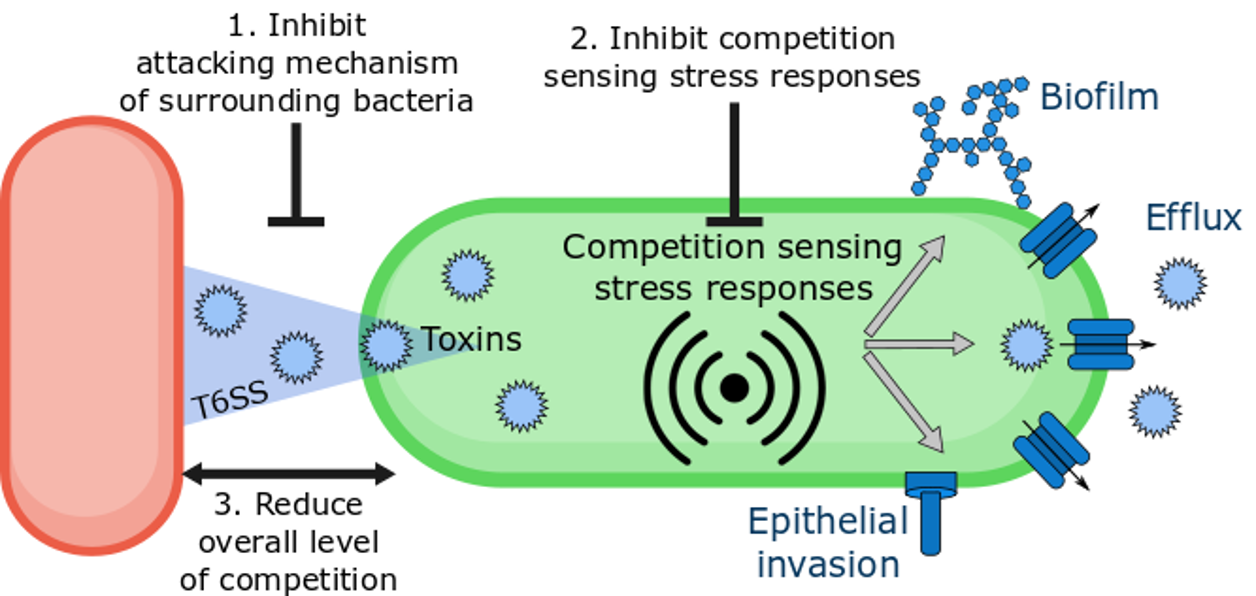
Competition quenching strategies reduce antibiotic tolerance in polymicrobial biofilms
We’re excited to announce the publication of our latest research in npj Biofilms and Microbiomes! This study explores novel antimicrobial strategies designed to disrupt the defensive responses of pathogens during bacterial competition, enhancing their susceptibility to traditional antibiotics. The full article is open access, available here.

Congratulations Lene!
Lene has successfully defended her PhD on ‘The double-edged sword of interspecies competition in antimicrobial applications’. She will unfortunately be leaving us but we wish her all the best in her future career and life.
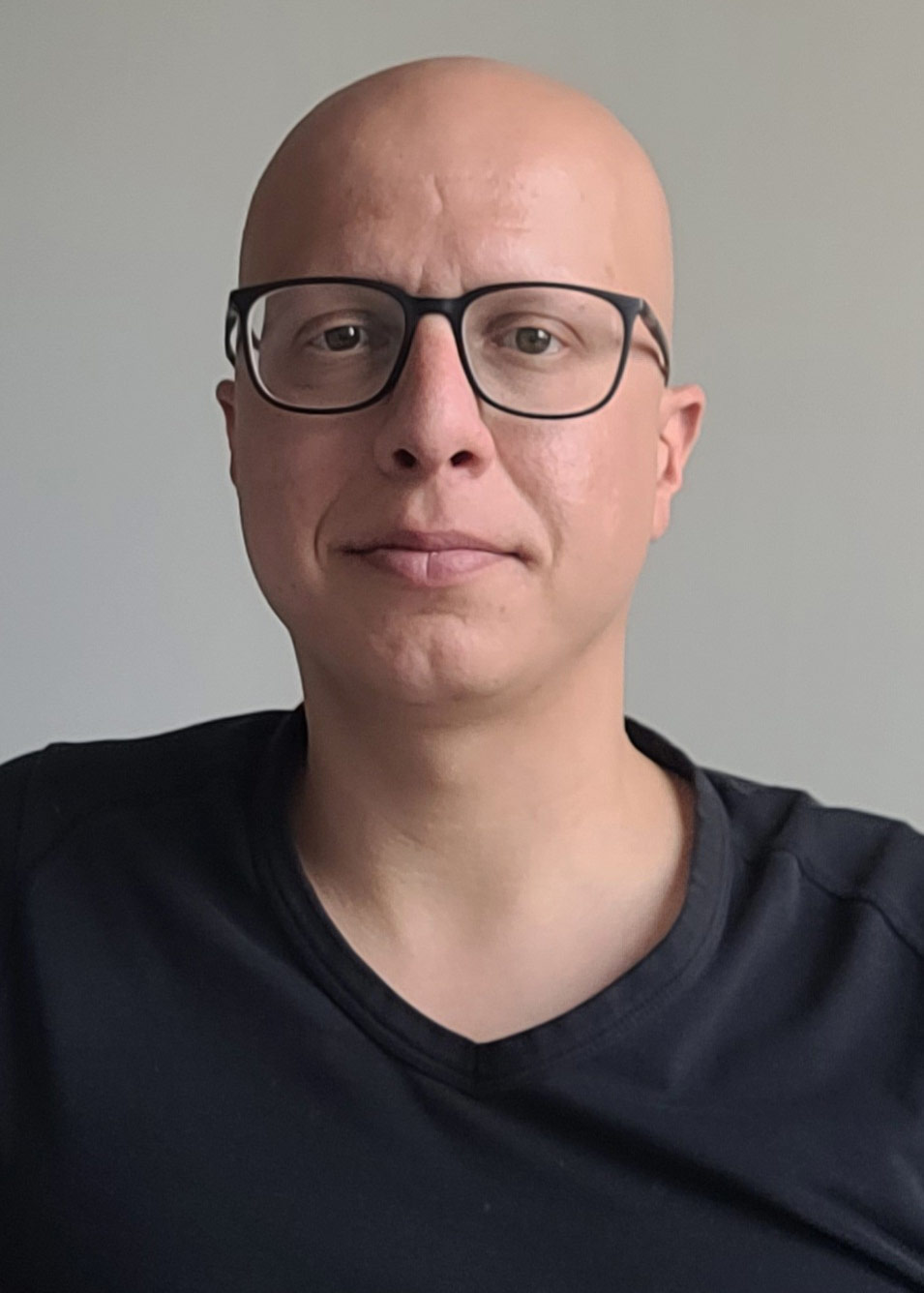
Congratulations Hozan!
Hozan has successfully defended his PhD on ‘Vascular graft coatings to prevent infection: current status and future potentials’. He will unfortunately be leaving us but we wish him all the best in his future career and life.

Congratulations Luka!
Luka has successfully defended his PhD on ‘The impact of interspecific interactions on the evolution of antimicrobial resistance in bacterial communities’. He will unfortunately be leaving us but we wish him all the best in his future career and life.
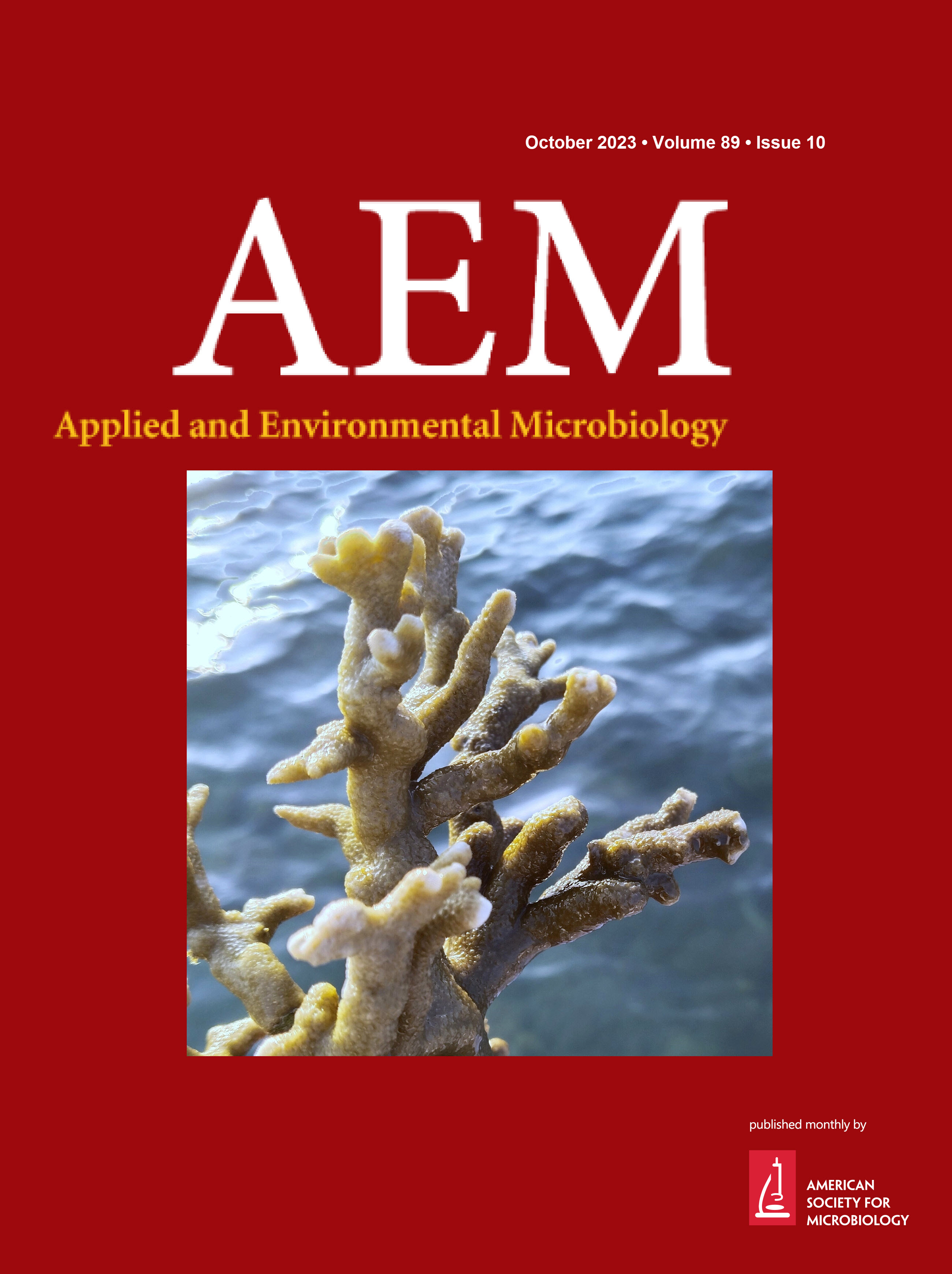
Competitive interactions facilitate resistance development against antimicrobials
Antimicrobial resistance is one of the most studied bacterial properties due to its enormous clinical and industrial relevance; however, most research focuses on resistance development of a single species in isolation. Luka Svet, Ilse Parijs, Simon Isphording, and Bram Lories showed in a paper published in Applied and Environmental Microbiology that resistance evolution of brewery isolates can differ greatly between single- and mixed-species conditions. Specifically, they observed that the development of antimicrobial resistance in certain species can be significantly enhanced in co-culture as compared to the single-species conditions. Overall, the study emphasizes the need of considering the within bacterial interactions in microbial communities when evaluating antimicrobial treatments and resistance evolution.

Funding received: High-throughput identification of robust collateral sensitivity for antibiotic cycling applications in Staphylococcus aureus wound infections
Sander received an FWO Fellowship fundamental research funding his project on collateral sensitivity. In this project, we will explore the robustness and resistance dynamics underlying collateral sensitivity and assess the clinical potential of collateral sensitivity based drug cycling strategies.

Funding received: Expanding the horizon of environmental Bacillus probiotics experimental evolution.
We are thrilled to announce that Lauren has successfully secured funding for her research project through a FWO-SB fellowship! This allows her to continue on her project about 'Expanding the horizon of environmental Bacillus probiotics experimental evolution'.

The impact of biofilm architecture and heterogeneity on bacterial evolution
For this project, new microscopic and optogenetic techniques will be used to take a closer look at how the structured environment of biofilms influences the evolution of antibiotic resistance and cooperation in bacterial populations.
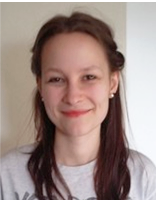
Congratulations Jolien!
Jolien has successfully defended her PhD on ‘The impact of matrix levels and bistability on biofilm properties’. She will unfortunately be leaving us but we wish her all the best in her future career and life.

Congratulations Gitta!
Gitta has successfully defended her PhD on ‘The effect of antibiotic resistance in Salmonella Typhimurium on competition with probiotics’. She will unfortunately be leaving us but we wish her all the best in her future career and life.

Congratulations Pauline!
Pauline has successfully defended her PhD on ‘Characterization of antibiotic resistance evolution in view of alternative treatment strategies’. She will unfortunately be leaving us but we wish her all the best in her future career and life.
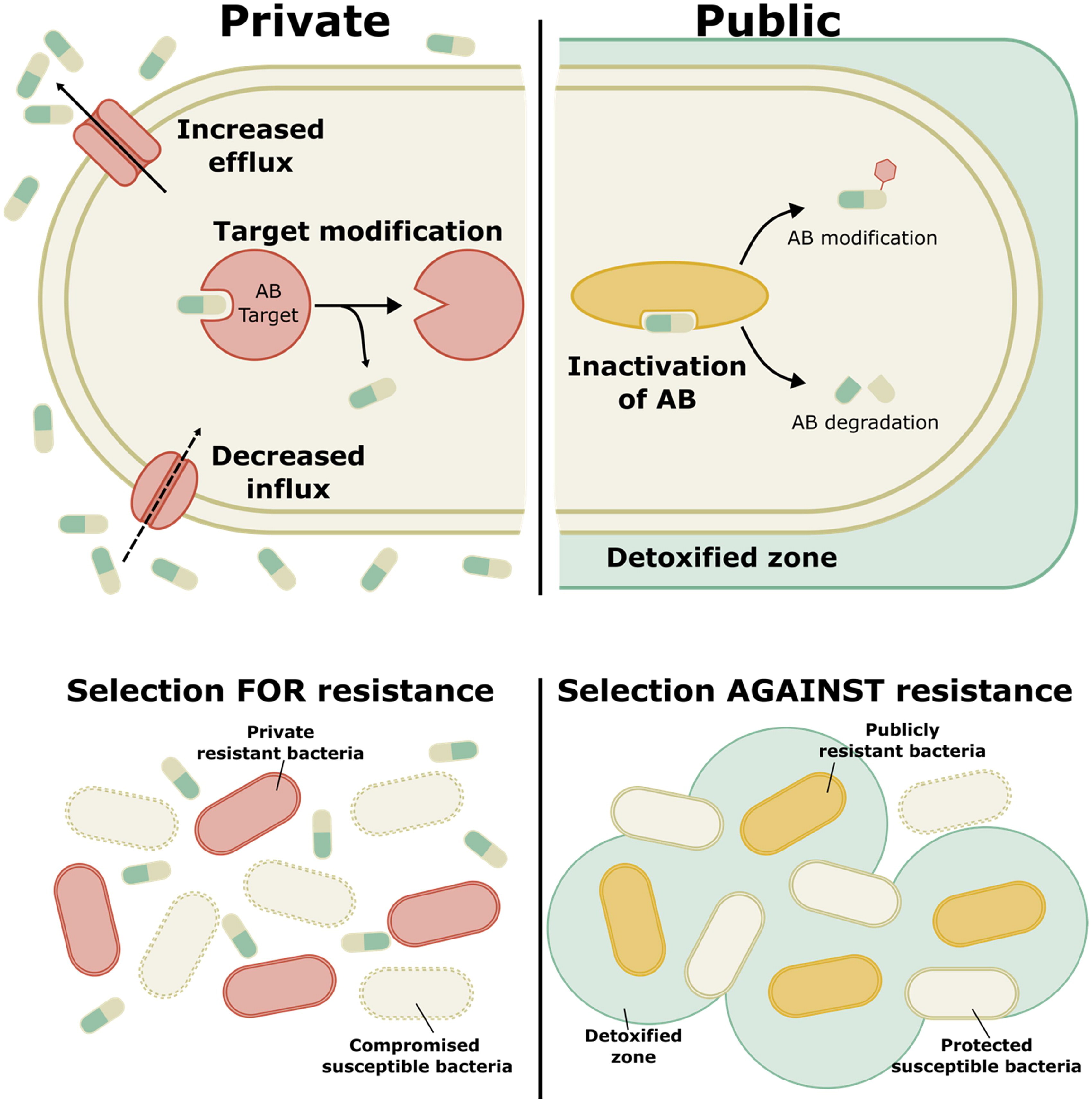
Selective pressures for public antibiotic resistance
We're thrilled to announce our new review "Selective pressures for public antibiotic resistance", where we explore how public resistance mechanisms can protect both resistant and susceptible bacteria during antibiotic treatment. We summarize how treatment strategies and ecological factors influence resistance evolution, emphasizing how susceptible bacteria can persist without the metabolic cost of resistance. Next, we apply these insights to guide the development of alternative therapies to limit resistance spread. Read the full article here.

10th Congress of European Microbiologists (FEMS2023)
Both Jolien and Sybren represented the MiCA lab during the 10th Congress of European Microbiologists (FEMS2023) in Hamburg, Germany. During an Offered Talk Session, Jolien elaborated on her work on “The effect of Salmonella biofilm matrix on antimicrobial tolerance”, while Sybren presented a poster on “Origanum vulgare extracts as a promising source of compounds with anti-pathogenic activity against dental plaque isolates”.
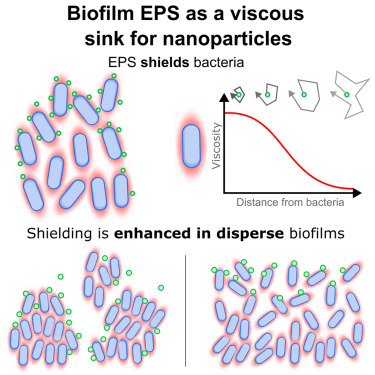
Anomalous diffusion of nanoparticles in the spatially heterogeneous biofilm environment
Nanoparticles are often suggested as a novel antimicrobial delivery strategy. Most of literature has focused on optimalisation of the chemical functionalization of nanoparticles, to improve nanoparticle penetration and antimicrobial efficacy in biofilms. In this work, Tom explored the effect of the biofilm architecture on the efficiency and efficacy on nanoparticle penetration.
4th Ghent Gut Inflammation Group Meeting - Intestinal host-microbiota interactions controlling health and disease
Ines elaborated on her work on “the interaction between virulence and biofilm traits during Salmonella infection in C. elegans”, during the Poster Session of the conference.

Effect of chemical modifications of tannins on their antimicrobial and antibiofilm effect against Gram-negative and Gram-positive bacteria
In the scientific pursuit of harnessing tannins' inherent antibacterial capabilities, recent research by Xabier has unfurled intriguing revelations. Methodically scrutinizing five distinct tannin variants, we honed in on intricate chemical modifications, unravelling nuanced shifts in antibacterial and antibiofilm activity. This meticulous exploration not only advances our comprehension of tannins but also holds promise for finely tuned antibacterial interventions.

Nutrient Availability and Biofilm Polysaccharide Shape the Bacillaene-Dependent Antagonism of Bacillus subtilis against Salmonella Typhimurium
Together with the Mandic-Mulec lab at the University of Ljubljana, we published a research paper exploring the probiotic potential of a novel Bacillus subtilis strain in combatting Salmonella and elucidated the mechanisms that underlie the inhibition of Salmonella.

Antibiotic Cycling Affects Resistance Evolution Independently of Collateral Sensitivity
Drug cycling, based on collateral sensitivity is believed to be a promising strategy to increase the lifespan of our currently available antibiotics. However, it is not clear to which extent this decreased resistance evolution is solely due to collateral sensitivity. Therefore, Pauline Brepoels and Kenny Appermans examined the impact of additional mutational interactions in the genetic background beyond collateral sensitivity on further resistance evolution.
Emerging Applications of Microbes (2nd edition)
Thijs presented a poster about his work on Salmonella biofilm in chronic carrier pigs. More specifically, on the impact of biofilm formation on gut colonization and genetic markers for functional diagnostics.
Alshimaa also presented a poster about the role of Salmonella stress responses in virulence and tolerance and how targeting theses responses could provide an alternative strategy to control Salmonella infection.

9th ASM conference on Biofilms
Gitta elaborated on her work on “combinatorial treatment with antibiotics and the probiotic E. coli Nissle as a strategy to combat biofilms of cooperatively resistant Salmonella Typhimurium” during the 3rd Poster/Networking Session of the conference. Her poster title was "Combinatorial treatment with antibiotics and the probiotic E. coli Nissle as a strategy to combat biofilms of cooperatively resistant Salmonella Typhimurium".
On the same conference, Luka presented the study on the stress response of Salmonella Typhimurium in heterogenous biofilm communities and the implications for the development of antimicrobial resistance. Potential solutions to this problem were outlined. His poster was titled "General stress response of Salmonella Typhimurium in heterogenous biofilm communities as a reaction to ecological competition: implications for the emergence and spread of antimicrobial resistance and potential solutions".

6th Applied Synthetic Biology in Europe (ASBE VI), Edinburgh
Jolien presented a poster (Sharing is caring: Artificially creating different matrix production levels), accompanied by a flash talk, at the ASBE VI in Edinburgh on her efforts to artificially recreate different production levels of biofilm matrix.
At the same conference, Lene presented her work about the importance of probiotic selection and the influence of microbial competition on Salmonella infections in chickens on a poster and flash talk titled: “Angels or demons in the fight against Salmonella : the double edged sword of probiotics in the poultry industry”

Origanum vulgare ethanolic extracts as a promising source of compounds with antimicrobial, anti-biofilm, and anti-virulence activity against dental plaque bacteria
In collaboration with the Laboratoire de Microbiologie Appliquée (University of Bejaia), Sybren & Guglielmo published a research paper on the antimicrobial, anti-biofilm and anti-virulence activity of medicinal plant extracts against dental plaque isolates in Frontiers in Microbiology.
Funding received: TRA-COAT
We are glad to announce that the MiCA lab obtained a coordinator project (TRA-COAT) in the highly competitive JPIAMR-ACTION Joint Transnational call. This projects focuses on the development and in vivo validation of a novel resistance-proof triggered release antibiofilm coating for orthopaedic implants and vascular grafts.
.png)
7th EUROBIOFILMS Conference
Ines presented her work on “elucidating the role of Salmonella biofilm components during infection in C. elegans” during the 2nd Poster/Networking Session of the conference.
During the same Poster/Networking Session, Lynn presented her work regarding “Structure-activity-toxicity optimization of novel biofilm inhibitors”.

Why is Salmonella dangerous and so difficult to remove?
Jolien published a blog (in Dutch) elaborating on Salmonella the gut pathogen in layman terms https://www.eoswetenschap.eu/voeding/waarom-salmonella-zo-hardnekkig-en-gevaarlijk.
18th International Symposium on Microbial Ecology
Pauline presented a poster, accompanied by a poster pitch, where she described the importance of mutational interactions and antibiotic exposure patterns in designing antibiotic cycling strategies.
Tom presented a poster about the evolutionary stability of yeast aggregation and a talk on how to leverage competition between microbes in new antimicrobial strategies.

FEMS conference on Microbiology
Luka held a short lecture on how the competition between Salmonella and the intestinal microbes leads to increased mutation rates and the emergence of resistance. The lecture was titled "Competition between Salmonella and intestinal microbes leads to increased mutation rates and the emergence of resistance".

Permissive aggregative group formation favors coexistence between cooperators and defectors in yeast
It is dangerous to go alone! Microorganisms can group up and protect each other from predation and toxic chemicals. Sometimes these groups can evolve further into multicellular organisms. Here, Tom investigated group formation by flocculation in yeast and its potential to evolve multicellularity.

Evolution-proof inhibitors of public good cooperation: a screening strategy inspired by social evolution theory
Congratulations to Maries, Mathieu and Bram for their review/methods paper in FEMS Microbiology Reviews! In this paper we provide an extensive evaluation of factors that determine the evolutionary robustness of public good inhibiting strategies. We use the outcome of this analysis to propose a 5-step strategy that allows to identify novel evolution-proof antimicrobial strategies targeting public goods and that takes potential pitfalls already into account in the first stages of screening.

Interactions and Their Impact on the Emergence and Spread of Antimicrobial Resistance
Gitta De Wit, Luka Svet, Bram Lories and Hans Steenackers collected their insights on the potential impact of interspecies social behavior on different aspects of resistance development in a review paper in the 76th volume of Annual Review of Microbiology. In this paper, factors are discussed by which interspecies interactions might influence resistance evolution, and a distinction is made between the effect on (a) the emergence of a resistant mutant and (b) the spread of this resistance throughout the population.
Coexistence in yeast
Tom presented a poster on how permissive aggregative group formation favors coexistence in yeast at Biofilms10, Liepzig.

Seminar at the University of Zurich
Hans gave a presentation at the university of Zurich on 'cooperation and competition in biofilms as novel targets for antimicrobial treatment'. Thank you to Rolf Kümmerli for the kind invitation!

In vitro models for vascular graft coating
Hozan published a systematic review on 'Pre-clinical in vitro Models of Vascular Graft Coating in the Prevention of Vascular Graft Infection: A Systematic Review'.

Congratulations Maries!
Maries has successfully defended her PhD on 'inhibiting bacterial cooperation as an evolutionarily robust anti-biofilm strategy'. She will unfortunately be leaving us but we wish her all the best in her future career and life.
.jpeg)
Funding received: Triple-A-COAT
The MiCA lab had the honor to obtain a coordinator project (Triple-A-COAT) in the highly competitive HORIZON-CL4-2021-RESILIENCE-01 call. This multi-partner project (four research institutions and nine companies) will aim to develop a sustainable, safe and biobased antimicrobial, antifungal and antiviral nanocoating platform.

Ines won third place at the ie-net competition 2021
Ines won third prize at the ie-net competition 2021 with her master thesis 'Pro- and Antibiotics, A golden combination against bacterial infections?'.

Funding received: Importance of Salmonella biofilm exopolymeric substances (EPS) during gut colonization and invasion — potential of EPS inhibition as an evolutionary robust antimicrobial strategy
Ines received an FWO-SB fellowship funding her PhD project on elucidating the role of EPS components during Salmonella infection.

Funding received: Using Experimental Evolution to Optimize Probiotics for their Application in Wound Care
We are proud to announce that Sybren received an FWO-SB fellowship funding his PhD project on experimental evolution of probiotics. In this project, we will explore whether we can use experimental evolution to enhance the anti-pathogenic properties of probiotic lactic acid bacteria against wound-associated pathogens.

Mathieu Joos won the student research award
After giving a presentation and facing the challenging questions of the jury and audience, Mathieu was declared the winner of the VBI Student Research Awards 2021 based on his master thesis 'Inhibition of public good production in Salmonella biofilms: An antimicrobial strategy that selects against resistance in vivo?.

Thijs received the VLAIO innovation mandate
We are proud to announce that Thijs received the innovation mandate for his project on the valorisation of novel anti-biofilm inhibitors.

Lynn received the Baekeland mandate
We are proud to announce that Lynn received the Baekeland mandate for her project on anti-biofilm sheathing for medical devices. For this, she will be working closely together with the start-up company Amynas on their third-generation implants.

In vivo models for vascular graft coating
Hozan published a systematic review on 'Pre-clinical in vivo Models of Vascular Graft Coating in the Prevention of Vascular Graft Infection: A Systematic Review.'

Presentation and panel discussion at the Montana Biofilm Science & Technology Meeting
Hans gave a presentation on 'the biofilm matrix as a cooperative and competitive trait' and participated in a panel discussion on 'uncovering the hidden potential and known challenges of the biofilm matrix'.

MiCA members in the spotlight in Bio-ingenieus
Curious about what we are doing? Maries and Tom’s work on Salmonella biofilm formation in C. elegans is highlighted in Bio-ingenieus, Journal of the Faculty of Bioscience Engineering (KU Leuven) (p. 27).

Importance of antibiotic gradients
Pauline presented a poster on the importance of antibiotic gradients and epistasis in drug cycling strategies at the World Microbe Forum.

Review on silver-coated vascular grafts
Hozan published a systematic review of preclinical data regarding commercial silver-coated vascular grafts in the Journal of Vascular Surgery.

Improved anti-biofilm coating for orthopedic implants
Guglielmo published a paper on an improved 2-aminoimidazole based anti-biofilm coating for orthopedic implants: activity, stability, and in vivo biocompatibility in Frontiers of Microbiology.

Aminoimidazoles as potent inhibitors in breweries
Lene and Jolien published a paper on 2-aminoimidazoles as potent inhibitors of contaminating brewery biofilms in Biofouling.

Agaric acid reduces Salmonella biofilm
Bram and Tom published an article on how agaric acid reduces Salmonella biofilm formation by inhibiting flagellar motility in Biofilm.
Congratulations Bram!
Bram has successfully defended his PhD on competition sensing: molecular mechanisms and therapeutic potential. He will be staying with us at MiCA and will be working as a post-doc on optimization of probiotics via experimental evolution.

Pseudomonas as biocontrol agent against Salmonella
Sharon and Bram published a paper on Pseudomonas putida as a potential biocontrol agent against Salmonella Java biofilm formation in the drinking water system of broiler houses in BMC Microbiology. Thank you to Koen De Reu and Marc Heyndrickx at ILVO for the nice collaboration!

Modelling dynamics after antimicrobial treatment
Luka presented a poster on modeling the dynamics of different bacterial populations in various environmental conditions when subjected to antimicrobial treatment at the Virtual Bioinformatics Student Symposium of the RSG Belgium.

Spotted in Bio-ingenieus: Tom’s simulations

Phosphate prodrugs as novel antimicrobials
Thijs, David and Xabier co-authored a paper on drug repurposing: phosphate prodrugs of anticancer and antiviral FDA-approved nucleosides as novel antimicrobials in the Journal of Antimicrobial Chemotherapy. Thank you to Michaela Serpi and Fabrizio Pertusati at Cardiff University for the nice collaboration!

Contract agent on biofilms and their visualization
Xabier co-authored an article on the study on the effect of contrast agent on biofilms and their visualization in porous substrate using X-ray mu CT in Applied Sciences. This paper is based on a collaboration with Abhishek Shastry and Matthieu Boone at UGent within the frame of the Bioclean project.
Biofilm bacteria use stress responses to detect and respond to competitors. Current Biology.
Bram and Stefanie published a paper on 'Biofilm bacteria use stress responses to detect and respond to competitors' in Current Biology. This paper is the result of a collaboration with The Foster Lab at the University of Oxford.

Aminoimidazoles inhibitors in breweries
Lene and Jolien presented their work on 2-aminoimidazoles as potent inhibitors of brewery biofilms at the 25th National Symposium for Applied Biological Sciences.
Inhibiting bacterial cooperation is an evolutionarily robust anti-biofilm strategy. Nature Communications.
Lise, Kenny and Maries published a paper on 'Inhibiting bacterial cooperation as an evolutionarily robust antibiofilm strategy' in Nature Communications. This paper is the result of a collaboration with The Foster Lab at the University of Oxford.

Talk on UZLeuven vascular symposium
Hans gave a talk on '2-aminoimidazole inhibitors of biofilm formation' at the 29th Vascular Symposium (Leuven, Belgium) organized by the UZ Leuven Department of Vascular Surgery.
This presentation frames within a collaboration with dr. Hozan Mufty (UZ Leuven) part of whose PhD research focuses on testing biofilm inhibitor coatings for vascular devices.

EPS inhibition as robust anti-biofilm strategy
Maries presented her work on inhibiting EPS production as an evolutionarily robust anti-biofilm strategy at the 21st Gut Day Symposium.

Jolien goes to the finals!
Jolien is a finalist in the ie-net prices 2019) with her master thesis ‘Do Salmonella bacteria also divide chores?’.

Presentation at International Biofilm Summit
Hans presented work on antimicrobial tolerance of brewery biofilms to an audience of food microbiologists and cleaning and disinfection companies at the IBS 2019 conference in Parma, Italy.

Three talks at Eurobiofilms - October 2019 - Glasgow
Bram talked about how biofilm bacteria use stress responses to detect and respond to competitors.
Hans gave a talk on inhibiting EPS production as an evolutionarily robust anti-biofilm strategy.
Xabier was awarded a short talk in the Elsevier PRIZE elevator session on responses to competition in Staphylococus aureus – Pseudomonas aeruginosa biofilms.
Influence gradients on resistance development
Pauline presented her work on the influence of antimicrobial gradients on the development of antibiotic resistance at the 5th Workshop on Bacterial and Fungal Biofilms.

Bram’s work on competition sensing highlighted in Bio-ingenieus, Journal of the Faculty of Bioscience Engineering
'Bacterial competition: what doesn’t kill them makes them stronger'.

A covalent imidazole coating to prevent biofilm formation on orthopedic implants
Elien published a paper on 'An antibiofilm coating of 5-aryl-2-aminoimidazole covalently attached to a titanium surface' in J Biomed Mater Res B Appl Biomater. This paper is the result of collaborations in the frame of the FP7 EU project COATIM and the IWT SBO project NEMOA.

Student research award for Pauline Brepoels
Pauline Brepoels is finalist of the VBI Student Research Awards 2018 based on her master thesis 'Antibiotic gradients influence the development of antibiotic resistance'.

Competitive release enhances antimicrobial tolerance
Ilse published a paper on 'The influence of competitive inter-species interactions on antimicrobial tolerance in multispecies brewery biofilms' in The ISME journal.

MICA Lab highlighted in Bio-ingenieus – Journal of the Faculty of Bioscience Engineering
'Oplossingen voor antimicrobiële resistentie: een focus op microbiële gemeenschappen'.

Impedimetric fingerprinting of biofilms using multielectrode arrays
Together with imec, we published a paper on 'Impedimetric fingerprinting and structural analysis of isogenic E. coli biofilms using multielectrode arrays' in Sensors and Actuators B: Chemical.

Review paper on drug repurposing
Ansie published a review paper on 'Repurposing of nucleoside- and nucleobase-derivative drugs as antibiotics and biofilm inhibitors' in Journal of Antimicrobial Chemotherapy.

ASM Meeting report
Bram, Ilse and Hans drafted the meeting report of the American Society for Microbiology Conference on 'Mechanisms of Interbacterial Cooperation and Competition', held in Washington DC, 1 to 4 March 2017.

Talk on competition sensing at ASM conference
Hans presented research on 'competition sensing' at the ASM Conference on 'Mechanisms of Interbacterial Cooperation and Competition'. Washington DC, US, 1 to 4 March 2017.

Triggered antibiofilm compound release from MOFs
Together with the De Vos Lab, we published a paper on 'Smart Metal–Organic Framework Coatings: Triggered Antibiofilm Compound Release' in ACS Appl. Mater. Interfaces.

Fine-tuning anti-biofilm activity of imidazoles
Elien published a paper on 'Modulation of the Substitution Pattern of 5-Aryl-2-Aminoimidazoles Allows Fine-Tuning of Their Antibiofilm Activity Spectrum and Toxicity' in Antimicrob Agents Chemother. This paper is the result of collaborations in the frame of the FP7 EU project COATIM and the IWT SBO project NEMOA.

Keynote talk on biofilm evolution at 3rd BIBR meeting
Hans gave a keynote talk on 'experimental evolution in biofilm populations' at the 3rd meeting of the BIBR group. Liège, Sart Tilman, Belgium, 8 September 2016. This talk was based on our recent paper in FEMS microbiology reviews.

Talk on evolution-proof drugs at ASM conference
Lise presented her research on 'evolution-proof drugs' at the 2nd ASM Conference on Experimental Microbial Evolution. Washington DC, US, 4-7 August, 2016.

Our art in KU Leuven Campuskrant
Beeldige wetenschap: Pootafdruk van dinosaurus? Rotspartij met mos?

The lab on television
The Lab was portrayed in a reportage on innovation in the province of Vlaams-Brabant broadcasted on ROB television in November 2012.

Award for best exploitation plan in LRD tech transfer competition
21 teams presented their exploitation plan in the frame of the training course on exploitation of research results and technology and knowledge transfer organized by KU Leuven research and development (2012). The team of Stijn, Hans, Gergo and Annick won one of the 3 awards for their exploitation plan on biofilm inhibitors.



